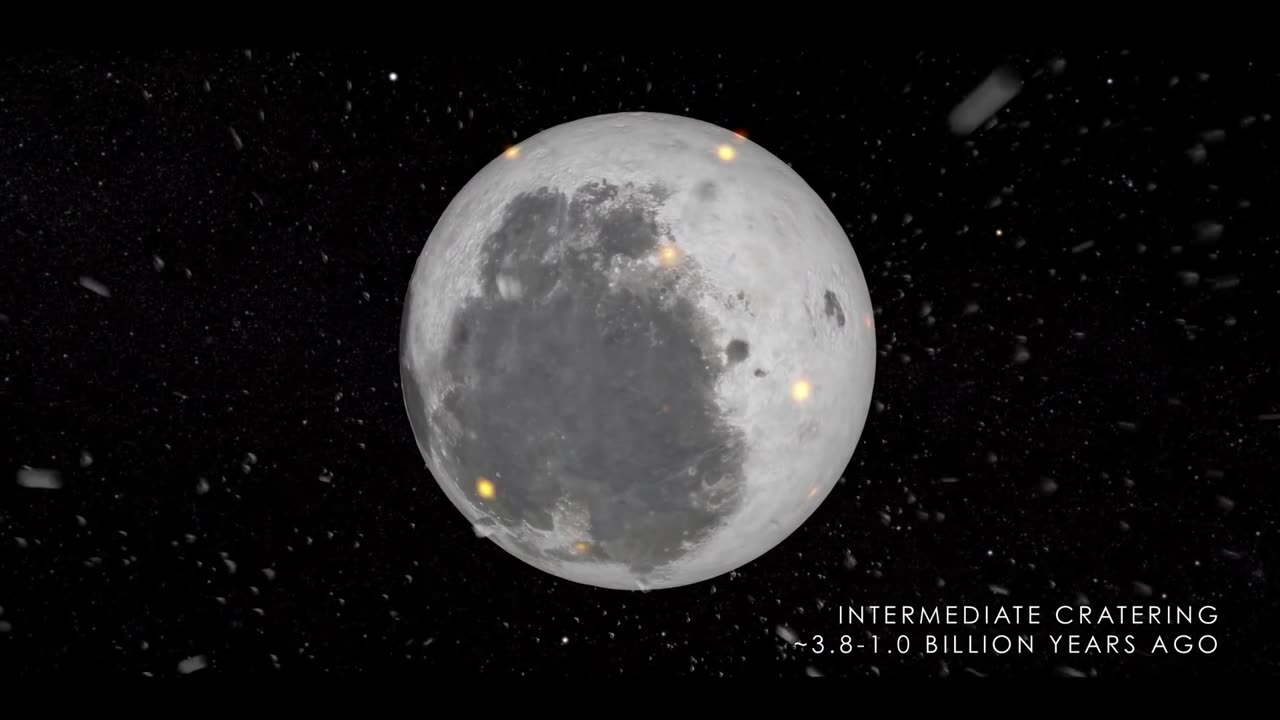Premium Only Content

NASA | EVOLUTION OF THE MOON
The Moon's evolution involves several key stages. It likely formed about 4.5 billion years ago from debris generated by a collision between Earth and a Mars-sized body. Initially, the Moon was much closer to Earth and had a molten surface. Over time, its interior cooled, forming a solid crust.Volcanic activity was prevalent during its early history, creating the vast plains known as lunar maria. The Moon also experienced a period of heavy bombardment by asteroids and comets, creating impact craters seen today.About 3 billion years ago, volcanic activity subsided, leading to the Moon's relatively quiet phase. The surface continued to be shaped by occasional impacts, along with factors like solar wind and micrometeoroid impacts.Fast forward to the present, the Moon is geologically inactive, with no active volcanism or tectonic activity. Its surface is characterized by maria, impact craters, mountains, and valleys. The Moon's rotation has also gradually slowed due to tidal forces from Earth, resulting in synchronous rotation where the same side always faces our planet.In recent years, there's been interest in returning to the Moon, with plans for lunar exploration and potential human habitation.
-
 2:48
2:48
Steven Crowder
1 hour agoCROWDER CLASSICS: What’s This? | Nightmare Before Kwanzaa (Nightmare Before Christmas Parody)
7.16K4 -
 LIVE
LIVE
Wendy Bell Radio
6 hours agoThe Bridge Too Far
11,610 watching -
 1:03:45
1:03:45
Donald Trump Jr.
21 hours agoHappy Festivus: Airing Our Grievances and Stopping The Swamp w/Sean Davis | TRIGGERED Ep.201
326K382 -
 1:30:30
1:30:30
Game On!
9 hours ago $0.01 earnedTop 5 things you need to know for Sports Christmas!
2.82K1 -
 1:58:10
1:58:10
Robert Gouveia
19 hours agoMatt Gaetz REJECTS Report, Sues Committee; Luigi Fan Club Arrives; Biden Commutes; Festivus Waste
229K180 -
 1:31:40
1:31:40
Adam Does Movies
19 hours agoThe Best & Worst Christmas Movies! - LIVE!
4.76K3 -
 58:10
58:10
Kimberly Guilfoyle
21 hours agoAmerica is Back & The Future is Bright: A Year in Review | Ep. 183
128K65 -
 3:03:27
3:03:27
vivafrei
1 day agoEp. 242: Barnes is BACK AGAIN! Trump, Fani, J6, RFK, Chip Roy, USS Liberty AND MORE! Viva & Barnes
215K218 -
 LIVE
LIVE
2 MIKES LIVE
2 hours agoTHE MIKE SCHWARTZ SHOW with DR. MICHAEL J SCHWARTZ 12-24-2024
147 watching -
 1:14:17
1:14:17
MTNTOUGH Fitness Lab
23 hours agoNavy SEAL Dom Raso: The Cold, Hard Truth About Modern Brotherhood | MTNPOD #96
1.62K1